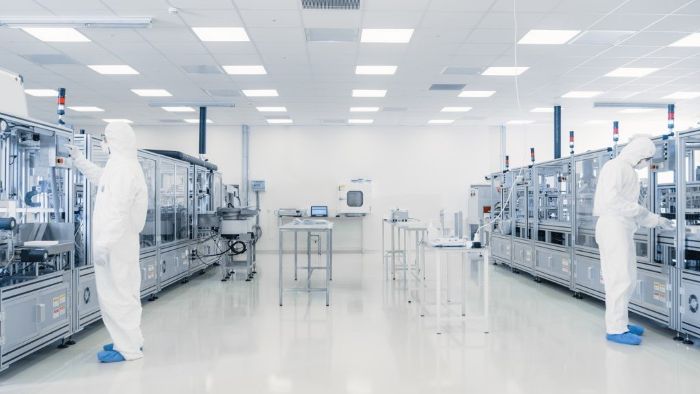Modern healthcare is at a high level, with a high percentage of success in diagnosing and treating various diseases. It would certainly not be possible without pharmacy, on which medicine relies heavily. Thus, it must run without any tolerance for mistakes.
All pharmaceutical products need to reach exceptionally high purity standards and safety marks to be ready for use. To achieve that, pharma companies and research centers have cleanrooms. These areas provide strict quality and environmental conditions to prevent contamination in drug making. And here we give you a peek into their importance for the pharmacy.
On the following link, you can find some interesting facts about this industry:
https://pharmacyfact.com/5-fascinating-pharmacy-facts-you-probably-didnt-know/
What Are Pharma Cleanrooms?
Making medicines, vaccines, medical equipment, and relevant supplies is a complex procedure. It must be done in a controlled, sterile environment. That’s the only way to prevent contamination from dust, airborne particles, chemicals, etc.
Pharma cleanrooms deliver quality assurance through air cleaning systems and team-specific safety procedures that secure worldwide patient health. Companies in this industry rely on these premises as a highly regulated environment. That’s where they make products, test them, and finally pack for the market.
These areas are classified by ISO (International Organization for Standardization). Cleanrooms are categorized by classes, depending on the maximum of allowed airborne particles per cubic meter. The lower the ISO number, the cleaner the room.
What Keeps Room Integrity
Design elements and sophisticated control systems are the core of pharma cleanrooms. They maintain area conditions at bay to prevent contamination. Air filtration systems use HEPA systems to purify the air, capturing 99.97% of particles as small as 0.3 microns. Plus, controlled airflow directs and removes contaminants from the working area.
Cleanrooms also feature temperature control systems. Along with humidity regulation, they prevent microbial growth and keep product quality and stability. Sensors and climate control systems make controlling these parameters easy 24/7.
Everything in pharma cleanrooms is made with the highest level of hygiene in mind. As for materials, they must be easy to maintain and clean. These are mostly non-porous, inox surfaces and stainless-steel equipment.
Safety Protocols and Personnel Practices

Pharma cleanrooms meet high standards and stay sterile. To keep it that way, people working in these areas must implement good practices to maintain cleanliness at the highest levels. So, all staff members must follow hygienic protocols during their entrance and work there.
Workers must follow gowning procedures. The first step before entering the sterile rooms is putting on coveralls along with gloves, face masks, and shoe covers. This protective clothing blocks all potential contaminants from people (like hair or dead skin cells) from getting into this controlled environment.
Inside the room, all movements are minimal and restricted to only necessary. That’s the way to avoid stirring up the particles. Also, the pharma staff is well-trained to follow SOP practices related to everything from safe work to cleaning and equipment handling.
Everyone working in cleanrooms must stay up to date with the latest industry standards. That can be achieved through regular training sessions and compliance checks.
Technology and Monitoring Systems
Modern technologies are key elements in pharma cleanrooms. They allow employees to keep track of air quality, microbial levels, and surface cleanliness. These systems check whether the area meets required safety standards and spot potential deviations.
These systems consist of sophisticated sensors that monitor and report a range of data, from particle counts to temperature and humidity. Alerts pop up every time a certain parameter goes outside the determined safety range. These alerts initiate corrective actions that stop contamination.
Most systems in pharma cleanrooms are automated. Another benefit is that automated cleaning systems, digital logs, and compliance tracking ensure continual quality control and work efficiency. These innovations mean that human errors are cut to a bare minimum.
Why Cleanroom Conditions Are Critical in Pharma
The contamination risk in pharma must be minimal. Even the smallest particles can create a huge mess with severe consequences. Impure medicines can become dangerous to patients since a single airborne pollutant can disrupt their safety parameters, potency levels, and stability fields. Working in pharma cleanrooms prevents that risk.
Also, FDA and GMP (Good Manufacturing Practice) provide industry standards for cleanliness and control procedures in the health industry. These rules ensure that products are of the highest quality and safe for public use. For more on these standards, read here.
Working in an uncontrolled area means products could be unsafe and lack quality. In that case, companies face significant consequences, from unexpected costs to legal sanctions. Cleanrooms serve as quality control elements that guard health products from undesirable external conditions.
Companies in the pharmaceutical industry shouldn’t neglect the importance of cleanrooms. They play a vital role in ensuring the safety, quality, and consistency of healthcare products. With advanced technologies and strict protocols in controlled environments, these areas help protect patients and uphold industry standards at every moment.






